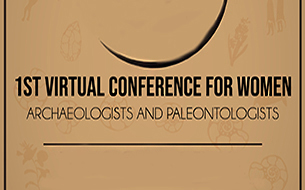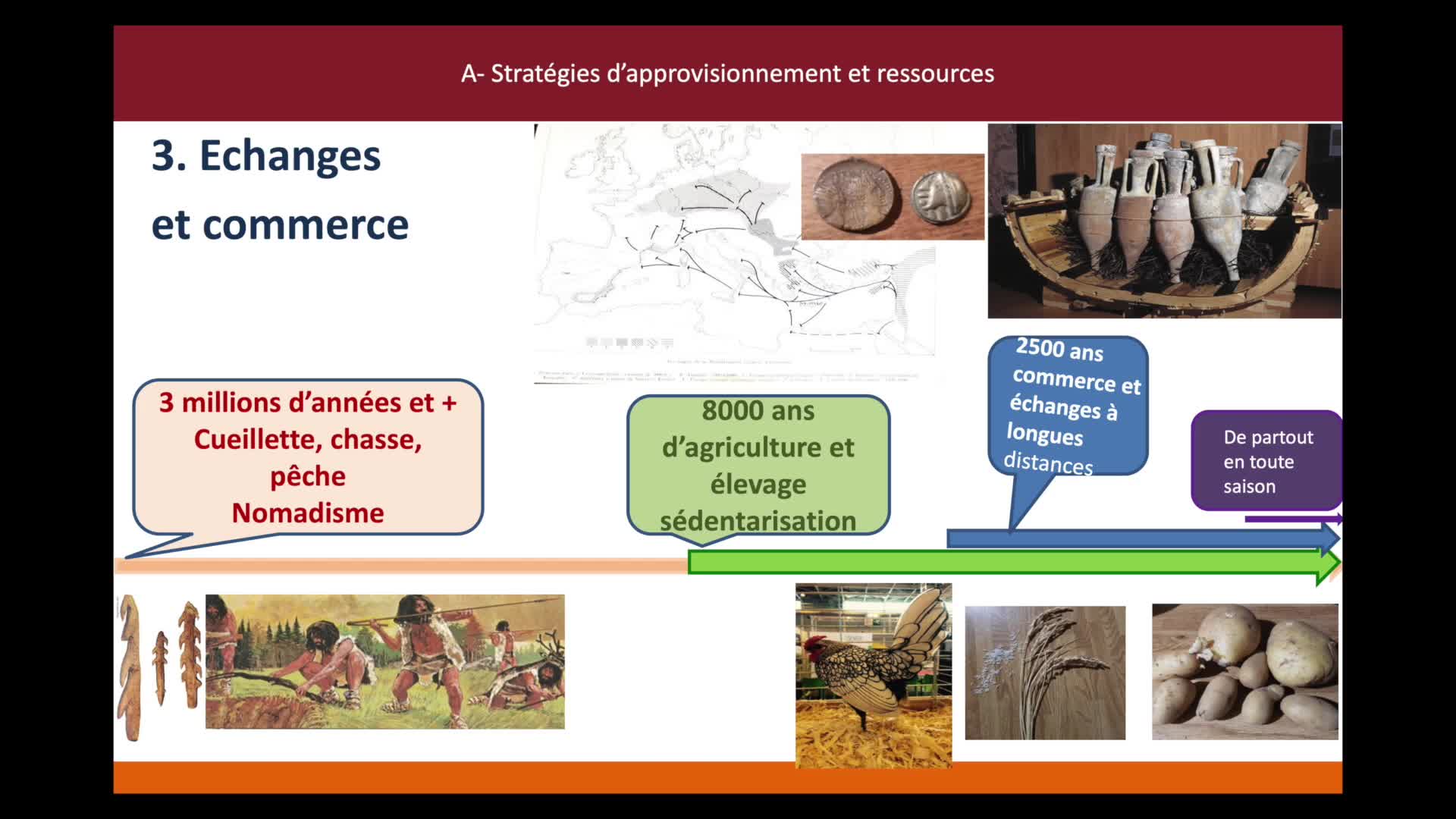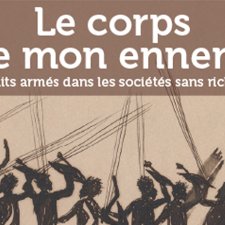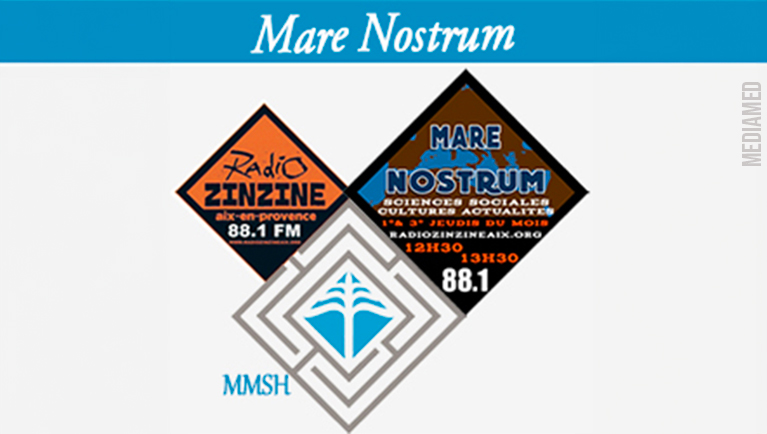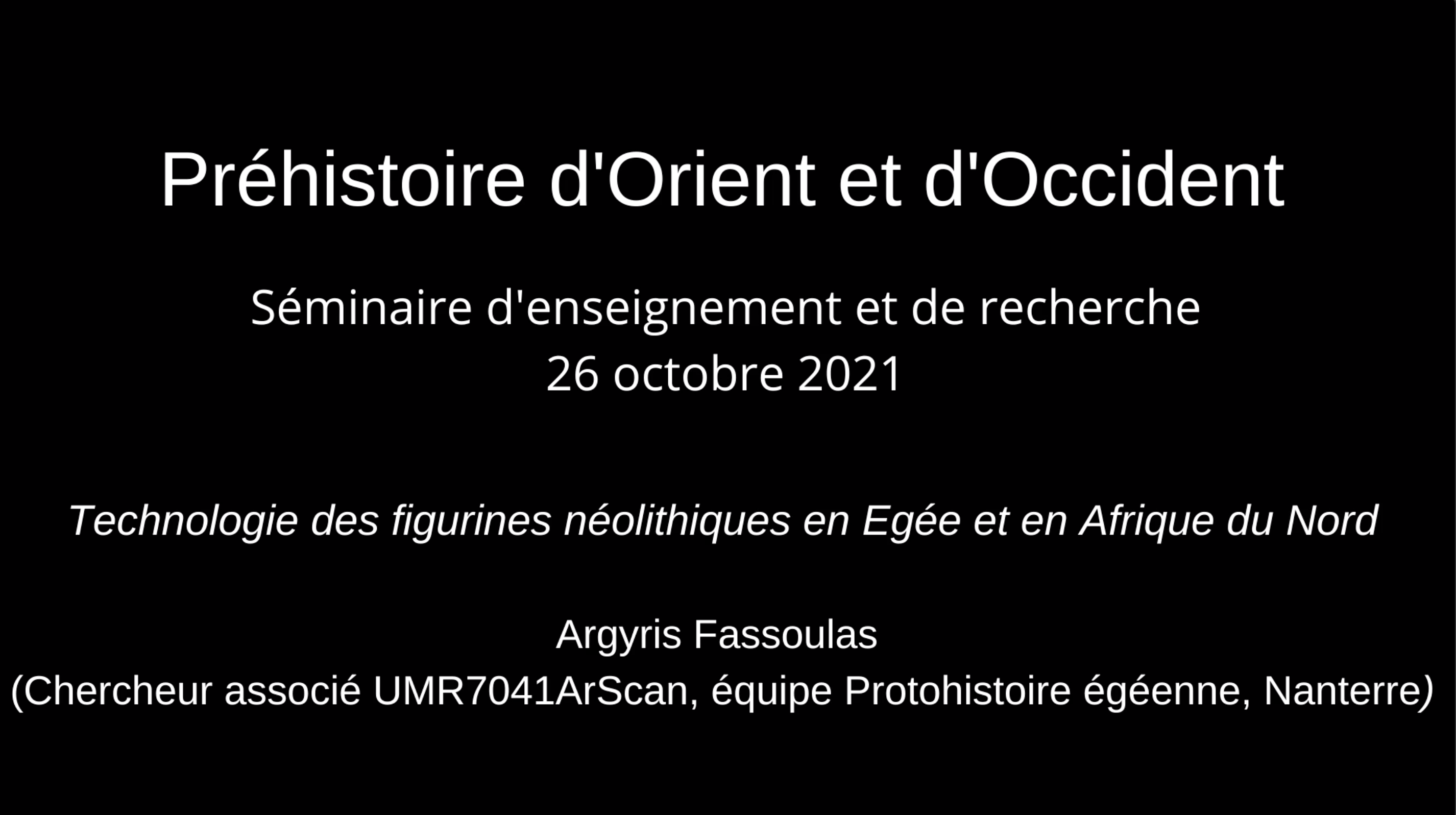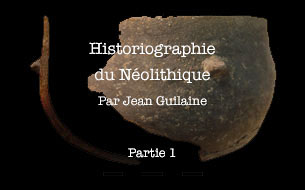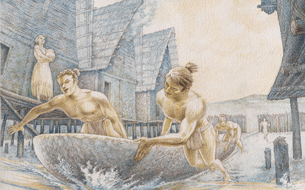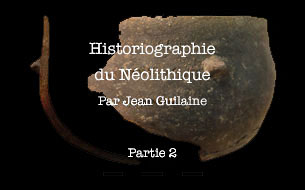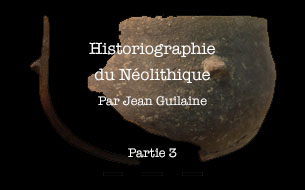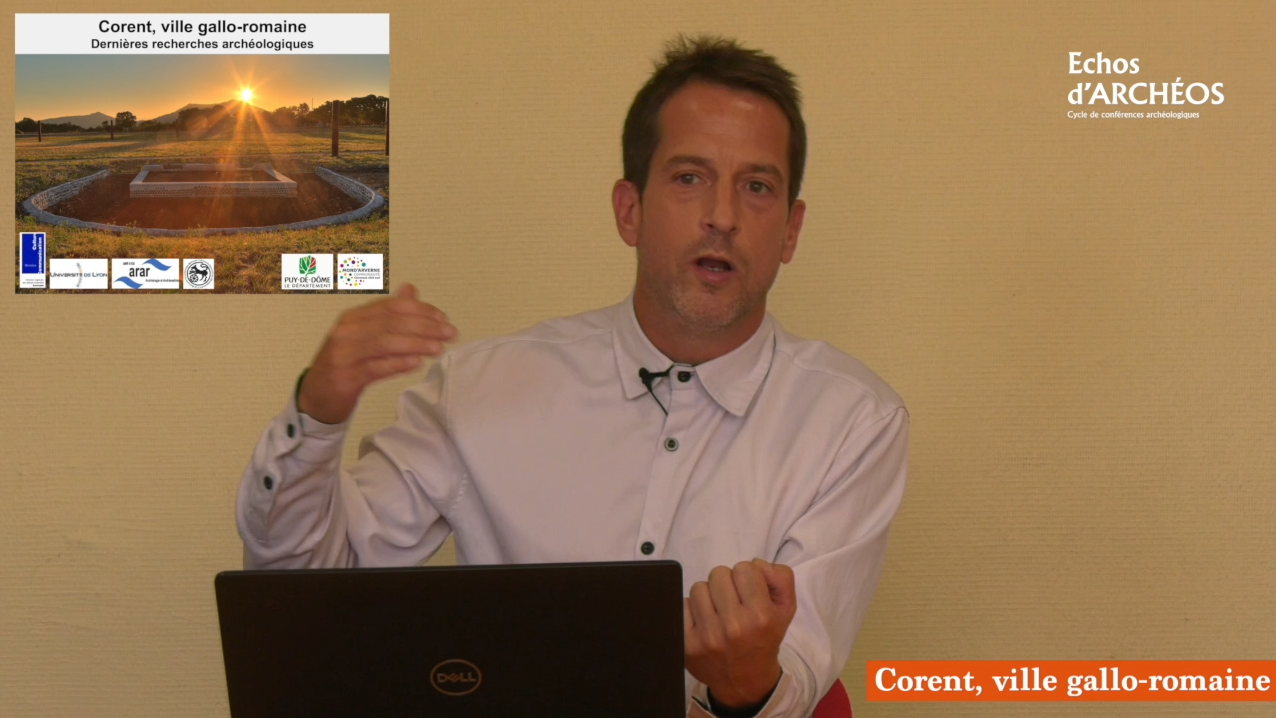Notice
Cranial vault healing in modern humans: input of archaeological and clinical data / Aliénor Lepetit
- document 1 document 2 document 3
- niveau 1 niveau 2 niveau 3
Descriptif
Cranial vault healing in modern humans: input of archaeological and clinical data / Aliénor Lepetit, in colloque "1st Virtual Conference for Women Archaeologists and Paleontologists. Nouveaux apports à l’étude des populations et environnements passés" organisé par le laboratoire Travaux et Recherches Archéologiques sur les Cultures, les Espaces et les Sociétés (TRACES) de l’Université Toulouse Jean Jaurès et le laboratoire Paléontologie Évolution Paléoécosystèmes (PALEVOPRIM) de l'Université de Poitiers, sous la responsabilité scientifique de Julie Bachellerie, Ana Belén Galán López (Traces), Émilie Berlioz et Margot Louail (Palevoprim). Université Toulouse Jean Jaurès, 8-9 mars 2021.
Session 1 : Morphological variability, taxonomy and adaptations.
Trepanation has been studied in archaeological populations since the XIXe century.Healed cases have been recognized in Neolithic populations, attesting to their great skills. It thus became a major interest in anthropological studies, causing the appearance of many hypotheses without scientific foundation and its exit from the paleopathological field. Furthermore, little attention was paid to the positive identification of the trepanation. Indeed, differential diagnosis is not always applied. One of the major issues is that the healing processes of the skull are not known. Thus, it is difficult to recognize a healed trepanation, when the cut marks have disappeared. By studying CT-scans of medical trepanations, we wanted to determine the modality of those healing processes, as well as their timeline. This will allow identifying this surgical operation with certainty within prehistoric populations, but also to estimate the survival time of individuals. Finally, we will be able to revise published cases of healed trepanations, especially those from the Museum National d'Histoire Naturelle's collection.
Thème
Documentation
Références documentaires
PARTIOT, Caroline, BESSOU, Maryelle, CHAVENT, Marie et al. (2017). Identification des cas de trépanations dans les populations anciennes: base de données et outil interactif de soutien au diagnostic différentiel. Bulletins et Mémoires de la Société d’Anthropologie de Paris (BMSAP), 3, vol. 29, 185-194. [En ligne : https://bmsap.revuesonline.com/articles/lvbmsap/pdf/2017/03/lvbmsap2017293p185.pdf].
Liens
Programme du colloque "1st Virtual Conference for Women Archaeologists and Paleontologists" (8-9 mars 2021)
Website du Laboratoire Paléontologie Évolution Paléoécosystèmes Paléoprimatologie (PALEVOPRIM)
Livret des résumés des communications du colloque "1st Virtual Conference for Women Archaeologists and Paleontologists. Nouveaux apports à l’étude des populations et environnements passés" (8-9 mars 2021)
Site internet dédié au colloque "1st Virtual Conference for Women Archaeologists and Paleontologists" (8-9 mars 2021)
Dans la même collection
-
Sensivity analysis to morphological changes of the shoulder joint: application to percussio…
Blasi-ToccacceliAliciaSensivity analysis to morphological changes of the shoulder joint: application to percussion gestures during Oldowan debitage / Alicia Blasi-Toccacceli, in colloque "1st Virtual Conference for
-
"Ouranopithecus macedoniensis" (late Miocene, Greece): analysis of mandibular fragments using …
IoannidouMelaniaOuranopithecus macedoniensis (late Miocene, Greece): analysis of mandibular fragments using 3D geometric morphometrics / Melania Ioannidou, in colloque "1st Virtual Conference for Women
-
Comminution capabilities of extant and fossil anthropoids during molar intercuspation: a preliminar…
WalkerAxelle E. C.Comminution capabilities of extant and fossil anthropoids during molar intercuspation: a preliminary experiment using a chewing simulator / Axelle E. C. Walker, in colloque "1st Virtual Conference for
-
New sperm whale cranium from the late Miocene and a revised family attribution for the small crown …
AlfsenApollineNew sperm whale cranium from the late Miocene and a revised family attribution for the small crown physeteroid Thalassocetus / Apolline Alfsen, in colloque "1st Virtual Conference for Women
-
What is shaping the brain? A perspective on brain size evolution in carnivorans / Margot…
MichaudMargotWhat is shaping the brain? A perspective on brain size evolution in carnivorans / Margot Michaud, in colloque "1st Virtual Conference for Women Archaeologists and Paleontologists. Nouveaux
-
Postnatal shape changes in the rodent mandible at a macroevolutionary scale / Morgane Dubied
DubiedMorganePostnatal shape changes in the rodent mandible at a macroevolutionary scale / Morgane Dubied, in colloque "1st Virtual Conference for Women Archaeologists and Paleontologists. Nouveaux apports à l
-
A transdisciplinary approach to reconstruct the Nilotic socio-ecosystem in Luxor west bank during t…
NicatoreGiuliaA transdisciplinary approach to reconstruct the Nilotic socio-ecosystem in Luxor west bank during the Ptolemaic period (3rd-1st centuries BC.) / Giulia Nicatore, in colloque "1st Virtual Conference
-
Tracing Human Ancestral Migration from its Symbiotic Bacteria / Alexia Nguyen Trung
Nguyen TrungAlexiaTracing Human Ancestral Migration from its Symbiotic Bacteria / Alexia Nguyen Trung, in colloque "1st Virtual Conference for Women Archaeologists and Paleontologists. Nouveaux apports à l’étude des
-
From monoliths to megaliths: a new approach on the megalithic burials of southwestern France / Bosc…
BoscusSarahFrom monoliths to megaliths: a new approach on the megalithic burials of southwestern France / Boscus Sarah, in colloque "1st Virtual Conference for Women Archaeologists and Paleontologists. Nouveaux
-
Foragers and their symbolic landscape. Understanding the role of rock art in the territoriality of …
JobardLéaForagers and their symbolic landscape. Understanding the role of rock art in the territoriality of Later Stone Age Matobo populations / Léa Jobard, in colloque "1st Virtual Conference for Women
-
Towards a tracking of past bird seasonal migrations through geological times: what could isotopes t…
DuhamelAnaïsTowards a tracking of past bird seasonal migrations through geological times: what could isotopes tell us? / Anaïs Duhamel, in colloque "1st Virtual Conference for Women Archaeologists and
-
Study of human group behaviors during the Last Glacial Maximum in the east Carpathian area from zoo…
DemayLaëtitiaStudy of human group behaviors during the Last Glacial Maximum in the east Carpathian area from zooarchaeological remains / Laëticia Demay, in colloque "1st Virtual Conference for Women Archaeologists
Sur le même thème
-
Les grandes étapes de l’alimentation, du Paléolithique à l’époque gauloise
FlouestAnneAnne Flouest, géologue et docteure en paléoclimatologie, revient sur l’étonnante évolution des usages alimentaires du Paléolithique à l’époque gauloise.
-
Les massacres de masse dans le Néolithique centre-européen (5200 - 4000 BC). Un état de la question
JeunesseChristianDepuis la retentissante et inaugurale découverte du dépôt humain de Talheim, en 1983, les fouilles de structures renfermant des groupes d’individus décédés de mort violente se sont multipliées dans le
-
Building and belonging: architecture and memory in neolithic orkney
EdmondsMark R.Talk by Mark EDMONDS, (Archeologie, York), as part of the workshop "Memory, Place, and Material Culture", organized by John SUTTON, 2022-2023 research fellow at the Paris IAS, Emeritus Professor at
-
L’Alimentation des premiers agriculteurs-éleveurs au Néolithique
GoudeGwenaëlleL'invitée de cette émission est Gwenaëlle Goude anthropobiologiste et bioarchéologue, chargée de recherche CNRS au LAMPEA (Laboratoire méditerranéen de Préhistoire Europe et Afrique), laboratoire de
-
Technologie des figurines néolithiques en Egée et en Afrique du Nord
FassoulasArgyrisIntervention (podcast) de Argyris Fassoulas (Chercheur associé UMR 7041 ArScan, équipe Protohistoire égéenne, Nanterre) dans le cadre des séminaires du cycle " Sciences pour l’Archéologie :
-
Historiographie du Néolithique. 1 / Jean Guilaine
GuilaineJeanCe séminaire relate la mutation de la recherche préhistorique au cours des quatre dernières décennies, et plus précisément l’histoire de la recherche néolithique française qui est celle d’une
-
Les palafittes préhistoriques de Chalain et Clairvaux (Jura), patrimoine de l’humanité
Greffier-RichardAnnickLourdaux-JuriettiSylvieAnnick Greffier-Richard (DRAC de Bourgogne-Franche-Comté, service régional de l’archéologie) et Sylvie Lourdaux-Jurietti (musée de Lons-le-Saunier) ont donné une conférence dans le cadre du cycle
-
Alfredo Mayoral - « Gergovie : nouvelles recherches géoarchéologiques et paléoenvironnementales »
Le jeudi 16 septembre 2021, à 20h30, sur Facebook, Page Musée de Gergovie, Alfredo Mayoral, géoarchéologue, à l'Institut Catalan d’Archéologie Classique et à GEOLAB (UMR 6042 CNRS / UCA UNILIM), a
-
Historiographie du Néolithique. 2 / Jean Guilaine
GuilaineJeanCe séminaire relate la mutation de la recherche préhistorique au cours des quatre dernières décennies, et plus précisément l’histoire de la recherche néolithique française qui est celle d’une
-
Historiographie du Néolithique. 3 / Jean Guilaine
GuilaineJeanHistoriographie du Néolithique. 3 / Jean Guilaine, in "Derniers chasseurs-cueilleurs et premiers paysans : la fin de la Préhistoire en Europe", webdocumentaire réalisé dans le cadre des appels à
-
MATTHIEU POUX - « CORENT, VILLE GALLO-ROMAINE. DERNIERES RECHERCHES ARCHEOLOGIQUES »
Le jeudi 17 juin 2021, à 20h30, la page Facebook du Musée Archéologique de la Bataille de Gergovie, l’archéologue Matthieu Poux, professeur d'archéologie romaine et gallo-romaine (Université Lumière
-
Sensivity analysis to morphological changes of the shoulder joint: application to percussio…
Blasi-ToccacceliAliciaSensivity analysis to morphological changes of the shoulder joint: application to percussion gestures during Oldowan debitage / Alicia Blasi-Toccacceli, in colloque "1st Virtual Conference for


